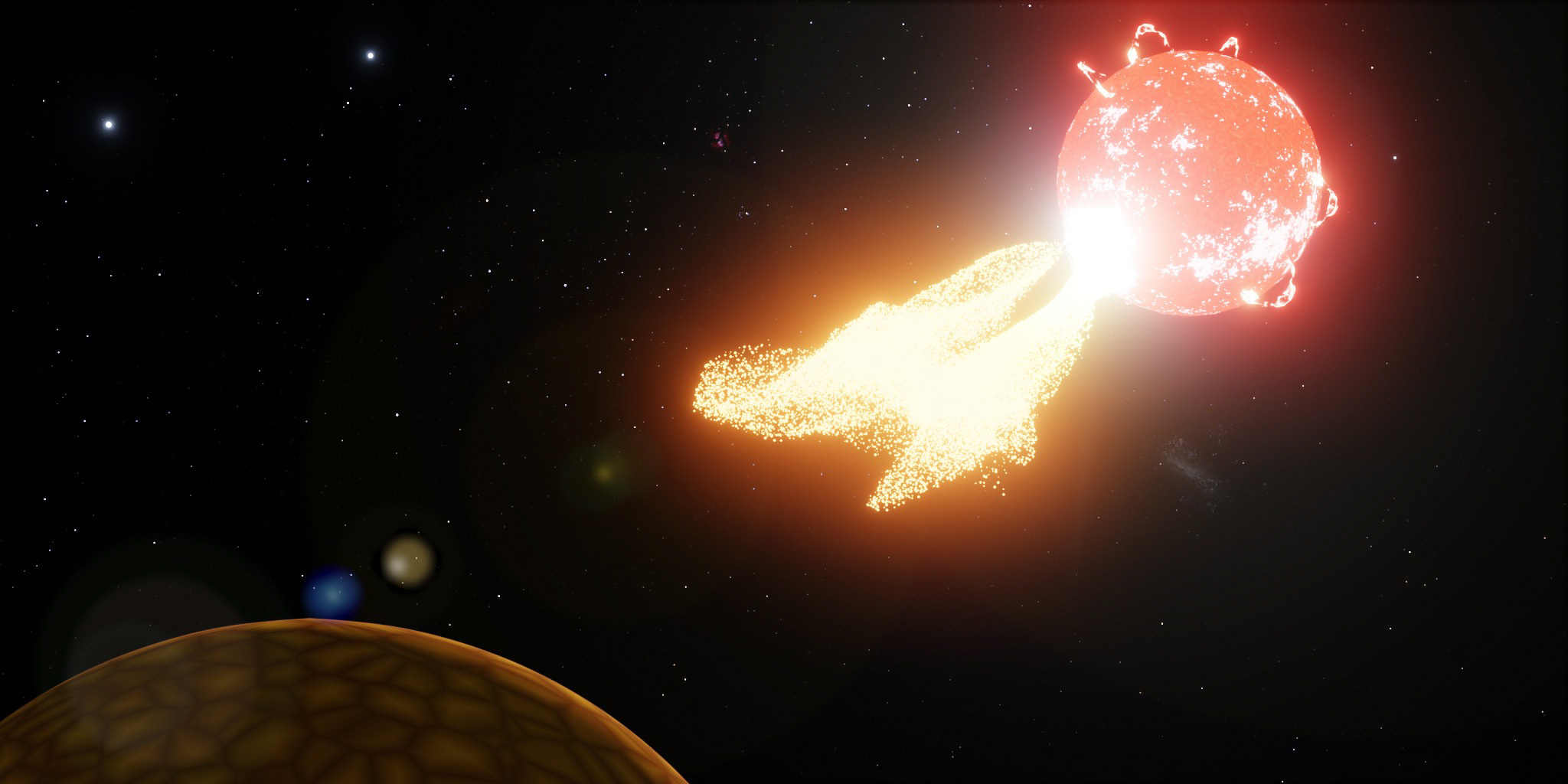UWM Physics professor David Kaplan worked with colleagues at the University of Sydney to discover signs of space weather around Proxima Centauri, the closest star to our Sun. The work, led by University of Sydney PhD student Andrew Zic, combined optical flares with radio signals seen with the Australian Square Kilometre Array radio telescope to identify behavior in Proxima Centauri that is just like what our Sun does when it emits a giant burst of particles - an event known as "space weather." This is particularly relevant for Proxima Centauri as it could have dramatic effects on the planets in that system, which would otherwise be considered a "habitable."
Read the UWM Report story.
The work was published in the Astrophysical Journal.
 Artist's conception of space weather in the Proxima Centauri system.
Credit: Mark Myers, ARC Centre of Excellence for Gravitational Wave Discovery (OzGrav).
Artist's conception of space weather in the Proxima Centauri system.
Credit: Mark Myers, ARC Centre of Excellence for Gravitational Wave Discovery (OzGrav).